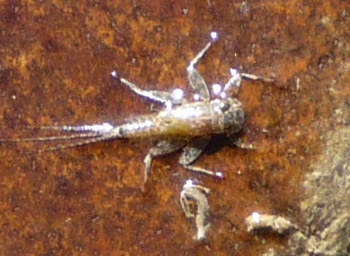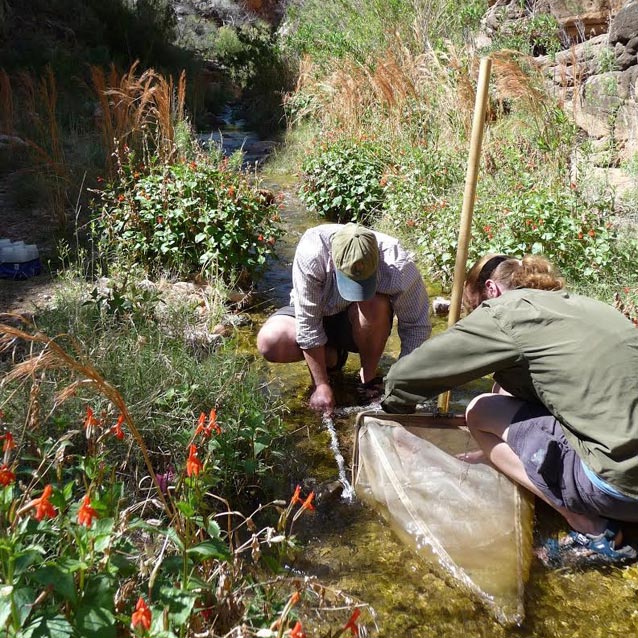Aquatic macroinvertebrates, such as insect larvae, snails, and worms, play a vital role in stream ecosystems, both as a food source and as consumers of algae and other organic matter.

NPS
Because macroinvertebrates are sensitive to environmental change, monitoring them can help to detect chemical, physical, and biological impacts to aquatic ecosystems. Long-term macroinvertebrate monitoring will complement water quality assessment methods, thus providing a more complete evaluation of overall stream health. Because the four states represented within Southern Colorado Plateau Network (SCPN) parks (AZ, CO, NM, UT), as well as the Navajo Nation, all include macroinvertebrates as part of their water quality monitoring programs, SCPN monitoring efforts will also contribute to a broader regional understanding of aquatic conditions.
Long-term Monitoring

NPS
Management Applications
Human-caused stream alterations can lead to structural and functional changes to aquatic ecosystems. Land uses can pollute streams or otherwise affect the condition of aquatic resources, and disturbance events may contribute to accelerated erosion and increases in suspended and bedload sediment. Persistent changes in climate can disrupt natural flood regimes and alter natural temperature cycles, affecting the composition, structure, and functioning of aquatic ecosystems. Climate-related changes to aquatic ecosystems may be amplified by interactions with existing anthropogenic stressors, such as the spread of invasive species like crayfish.
The first few years of monitoring data will be used to document baseline conditions in SCPN streams. Over the long term, macroinvertebrate data will be used to (1) examine responses of aquatic life to changing water quality or physical habitat conditions, (2) follow the recovery of aquatic macroinvertebrate assemblages after disturbance events, such as catastrophic fires and floods, and (3) document changes in macroinvertebrate community structure in response to climate change.

For More Information
Reports & Publications
https://science.nature.nps.gov/im/units/scpn/monitor/macroInvert.cfm
Contact
Stacy Stumpf, Stacy_Stumpf@nps.gov
Prepared by the Southern Colorado Plateau Network Inventory and Monitoring Program, 2012.
Tags
- bandelier national monument
- canyon de chelly national monument
- grand canyon national park
- mesa verde national park
- swscience
- american southwest
- southern colorado plateau
- scpn
- project
- monitoring
- aquatic macroinvertebrates
- invertebrates
- rivers
- streams
- arizona
- colorado
- new mexico
- utah
- jmrlc
- natural resources
Last updated: January 12, 2023
